Owens & Minor Bundle
Who Really Owns Owens & Minor?
Understanding the ownership structure of a company like Owens & Minor is crucial for grasping its strategic direction and influence within the healthcare logistics sector. Recent discussions regarding the potential sale of its Products & Healthcare Services segment signal a significant strategic shift. This exploration dives into the evolution of Owens & Minor SWOT Analysis, tracing ownership shifts and identifying key stakeholders.
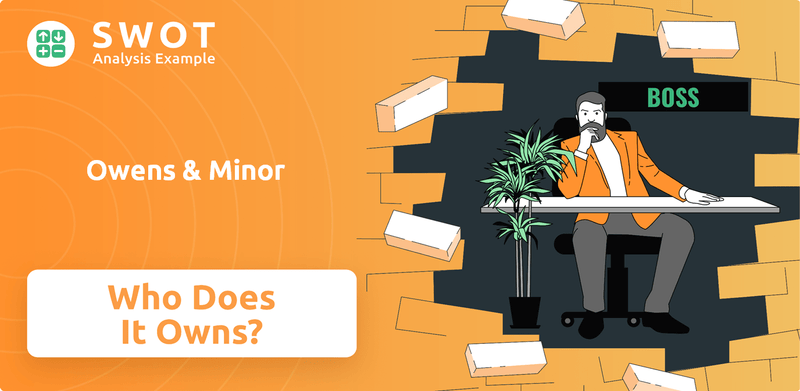
Owens & Minor, a global healthcare logistics company and medical supplies company, has a rich history dating back to 1882. Knowing who owns Owens & Minor is key to understanding its future. This deep dive will explore the major shareholders of Owens & Minor, its financial performance, and its role in the healthcare supply chain. The company, often referred to by its stock ticker OMN, is a Fortune 500 company with a global presence and a complex ownership structure.
Who Founded Owens & Minor?
The story of Owens & Minor began in 1882 in Richmond, Virginia, marking its inception as a pharmaceutical wholesale and retail venture. The founders, Otho O. Owens and George Gilmer Minor, II, both previously worked as traveling salesmen in the same industry. Despite the competitive landscape, they successfully secured funding from partners at Brown, Davis, & Co., a grocery wholesaler.
The early years of Owens & Minor were significantly shaped by the founders' families. While the exact initial equity distribution isn't publicly available, family influence was a key factor. G. Gilmer Minor, Jr., played a pivotal role, acquiring the Bodeker Drug Company in 1955 and driving an aggressive growth strategy through acquisitions.
This family-led approach continued, with G. Gilmer Minor III, a descendant of one of the founders, taking the helm as president in 1981. He continued the company's expansion, helping it reach over $1 billion in revenue by 1990. The company largely remained a family-operated enterprise until G. Gilmer Minor III retired as CEO in 2005.
Founded in 1882 in Richmond, Virginia, by Otho O. Owens and George Gilmer Minor, II, as a pharmaceutical wholesale and retail company. They were previously rival traveling salesmen.
Secured financing from partners at Brown, Davis, & Co., a grocery wholesaler, despite the competitive landscape. This initial funding was crucial for the company's early operations.
The company's early history shows a strong family influence. G. Gilmer Minor, Jr., and G. Gilmer Minor III, descendants of the founders, led the company through significant growth phases.
G. Gilmer Minor, Jr. acquired the Bodeker Drug Company in 1955 and expanded through acquisitions. This included A&J Hospital Supply in 1966 and Powers & Anderson in 1968.
Under G. Gilmer Minor III, the company achieved over $1 billion in revenue by 1990. This growth reflected the company's expansion and strategic acquisitions.
The company largely remained a family-operated enterprise until G. Gilmer Minor III's retirement as CEO in 2005. This continuity ensured a consistent strategic direction.
The early ownership of Owens & Minor was characterized by its founders, Otho O. Owens and George Gilmer Minor, II, and their family's influence. The company's growth was driven by strategic acquisitions and family leadership, particularly under G. Gilmer Minor, Jr., and G. Gilmer Minor III. The company's early success was built on a strong foundation of family involvement and strategic business decisions.
- Founded in 1882 in Richmond, Virginia.
- Early financing from Brown, Davis, & Co.
- Strong family influence in leadership and strategy.
- G. Gilmer Minor, Jr. and G. Gilmer Minor III played key roles in acquisitions and revenue growth.
- Remained family-operated until 2005.
Owens & Minor SWOT Analysis
- Complete SWOT Breakdown
- Fully Customizable
- Editable in Excel & Word
- Professional Formatting
- Investor-Ready Format
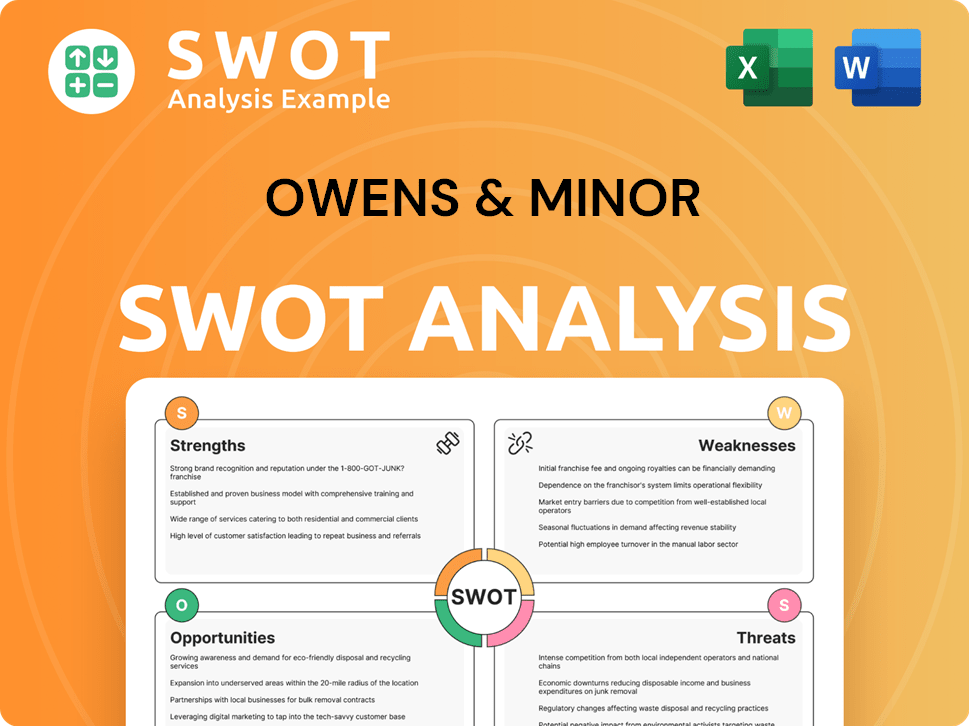
How Has Owens & Minor’s Ownership Changed Over Time?
The ownership structure of Owens & Minor has seen considerable changes since its inception. Initially a family-run business, it evolved into a publicly traded entity, broadening its shareholder base significantly. The company's initial public offering (IPO) in 1988, marked by its listing on the New York Stock Exchange (NYSE) under the ticker OMI, was a pivotal moment in this transformation, opening up ownership to a wider audience. As of March 19, 2025, the company had 77,254,507 shares of Common Stock issued and outstanding.
The transition from a privately held company to a publicly traded one fundamentally altered the ownership landscape. This shift introduced institutional investors, who now hold a dominant position in the company's shares. The influence of these major shareholders on the company's strategy and governance has become increasingly significant. The evolution reflects the company's growth and its integration into the broader financial markets.
| Key Events | Impact on Ownership | Date |
|---|---|---|
| Initial Public Offering (IPO) | Transitioned from family-operated to publicly traded; broadened shareholder base. | 1988 |
| Increased Institutional Investment | Shift towards institutional ownership, influencing governance and financial performance focus. | Ongoing |
| Insider Ownership Changes | Alignment of management interests with shareholders, reflecting confidence in the company. | May 2025 |
Currently, institutional investors hold a substantial portion of Owens & Minor's shares. As of May 2025, institutional ownership stands at approximately 94.93%, with mutual funds holding around 74.54%. Major institutional holders as of March 31, 2025, include Blackrock, Inc. (11,510,044 shares), Coliseum Capital Management, LLC (10,624,599 shares), and Vanguard Group Inc. (9,156,759 shares). Insiders, including company executives and directors, have increased their holdings from 4.27% to 4.46% in May 2025, signaling confidence in the company's direction. The presence of large institutional investors often leads to a focus on financial performance and shareholder value. For more details, explore the Growth Strategy of Owens & Minor.
Owens & Minor's ownership has shifted from a family business to a publicly traded company, with institutional investors now holding a significant majority.
- Institutional ownership stands at approximately 94.93% as of May 2025.
- Major shareholders include Blackrock, Inc., Coliseum Capital Management, LLC, and Vanguard Group Inc.
- Insider ownership has increased, indicating confidence in the company's future.
- The company's financial performance and shareholder value are primary focus areas.
Owens & Minor PESTLE Analysis
- Covers All 6 PESTLE Categories
- No Research Needed – Save Hours of Work
- Built by Experts, Trusted by Consultants
- Instant Download, Ready to Use
- 100% Editable, Fully Customizable
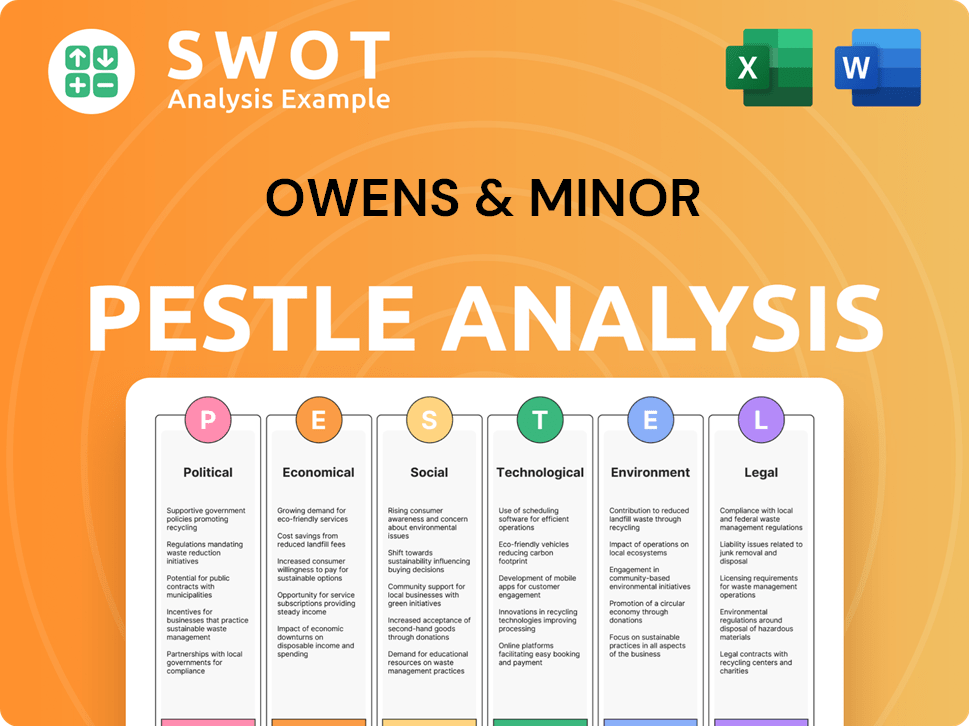
Who Sits on Owens & Minor’s Board?
The current Board of Directors of Owens & Minor, as of April 2, 2025, is composed of nine directors. The board is responsible for overseeing the company's strategic direction and governance. Mark A. Beck serves as the Chair of the Board, providing leadership in board meetings and strategic discussions. Edward A. Pesicka, the President and Chief Executive Officer, also holds a seat on the Board. Other members include Gwendolyn M. Bingham, Kenneth Gardner-Smith, Robert J. Henkel, and Carissa L. Rollins, bringing diverse expertise and perspectives to the table, with some representing independent seats.
The board's composition reflects a mix of experience and perspectives, crucial for navigating the complexities of the healthcare supply chain. The presence of the CEO on the board ensures alignment between executive management and board oversight. The board's structure helps ensure that the company complies with corporate governance best practices and that shareholder interests are represented.
| Director | Title | Board Role |
|---|---|---|
| Mark A. Beck | Chair of the Board | Oversees board meetings and strategic direction |
| Edward A. Pesicka | President and Chief Executive Officer | Executive leadership, board member |
| Gwendolyn M. Bingham | Director | Independent Director |
| Kenneth Gardner-Smith | Director | Independent Director |
| Robert J. Henkel | Director | Independent Director |
| Carissa L. Rollins | Director | Independent Director |
The voting structure for Owens & Minor's common stock follows a one-share-one-vote principle. As of March 19, 2025, each share of common stock is entitled to one vote on matters presented at shareholder meetings. A quorum for shareholder meetings requires the presence of shareholders holding at least a majority of the outstanding shares of capital stock entitled to vote, as per the company's bylaws. While there haven't been any recent major proxy battles, the board has stock ownership guidelines for its directors. These guidelines require directors to achieve a certain level of stock ownership within five years of joining the board or by July 30, 2026, aligning their interests with those of the shareholders. For more information about the competitive landscape, you can review the Competitors Landscape of Owens & Minor.
The Board of Directors plays a crucial role in the governance of Owens & Minor, ensuring strategic oversight and compliance.
- The board consists of nine directors as of April 2, 2025.
- Voting rights are typically one share, one vote.
- Directors are required to meet stock ownership guidelines.
- The company's bylaws require a quorum of at least a majority of outstanding shares for shareholder meetings.
Owens & Minor Business Model Canvas
- Complete 9-Block Business Model Canvas
- Effortlessly Communicate Your Business Strategy
- Investor-Ready BMC Format
- 100% Editable and Customizable
- Clear and Structured Layout
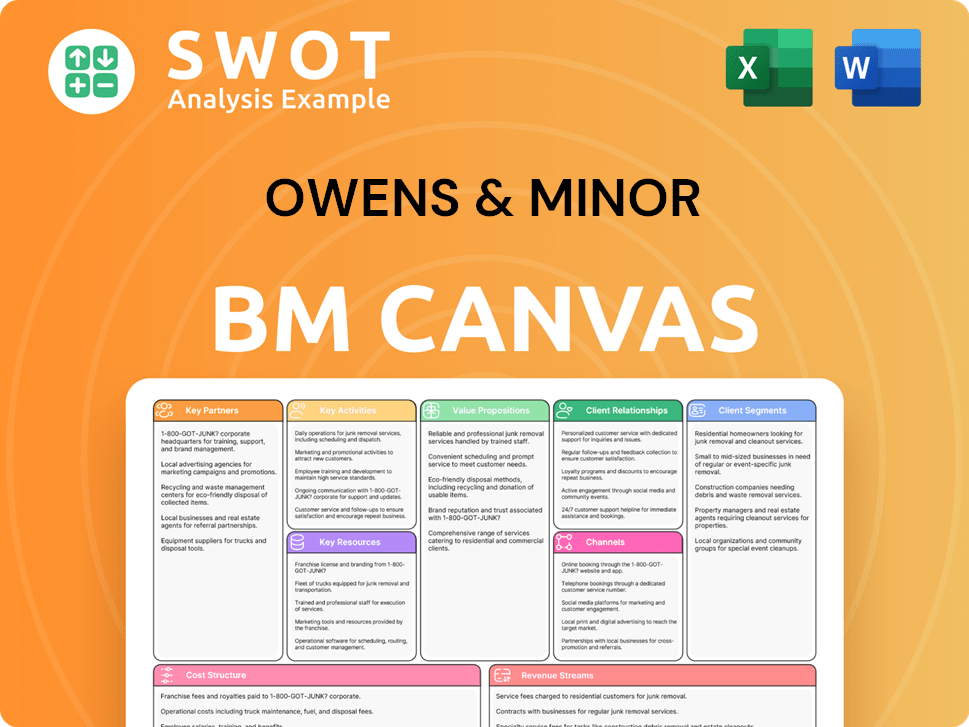
What Recent Changes Have Shaped Owens & Minor’s Ownership Landscape?
Over the past few years, significant developments have reshaped the ownership profile and strategic direction of Owens & Minor. In February 2025, the company's Board of Directors approved a share repurchase program, signaling a commitment to return value to its shareholders. As of March 31, 2025, approximately 0.2 million shares were repurchased for roughly $1.5 million, with an average price of $8.66 per share.
A key strategic move was the planned acquisition of Rotech, Inc. in July 2024, which was intended to strengthen the Patient Direct segment. However, this acquisition was mutually terminated as of June 5, 2025. Additionally, on February 28, 2025, the company announced it was exploring the potential sale of its Products & Healthcare Services segment, reflecting industry trends towards strategic focus and consolidation.
| Metric | Details | Date |
|---|---|---|
| Share Repurchase Program Authorization | Up to $100 million | February 2025 |
| Shares Repurchased (as of March 31, 2025) | Approximately 0.2 million | March 31, 2025 |
| Total Repurchased Value (as of March 31, 2025) | $1.5 million | March 31, 2025 |
| Average Price Per Share (as of March 31, 2025) | $8.66 | March 31, 2025 |
| Planned Rotech Acquisition | $1.36 billion | July 2024 |
| Rotech Acquisition Termination | Mutually agreed | June 5, 2025 |
The financial guidance for 2025 projects revenue between $10.85 billion and $11.15 billion, with adjusted EBITDA expected to be between $560 million and $590 million. These figures do not include the potential sale of the Products & Healthcare Services segment or future share repurchase activities. This strategic realignment, combined with the ongoing emphasis on the Patient Direct segment, which saw mid-single-digit growth in 2024, indicates a focus on optimizing business segments and enhancing shareholder value. For more information, you can read a Brief History of Owens & Minor.
Owens & Minor is a publicly traded company, meaning that its ownership is distributed among various shareholders.
Recent trends include share repurchases and potential divestitures, reflecting a focus on shareholder value and strategic realignment.
The company's financial guidance for 2025 anticipates revenues between $10.85 billion and $11.15 billion, with adjusted EBITDA between $560 million and $590 million.
Owens & Minor operates in the healthcare supply chain, and its market share is influenced by its strategic initiatives and industry dynamics.
Owens & Minor Porter's Five Forces Analysis
- Covers All 5 Competitive Forces in Detail
- Structured for Consultants, Students, and Founders
- 100% Editable in Microsoft Word & Excel
- Instant Digital Download – Use Immediately
- Compatible with Mac & PC – Fully Unlocked
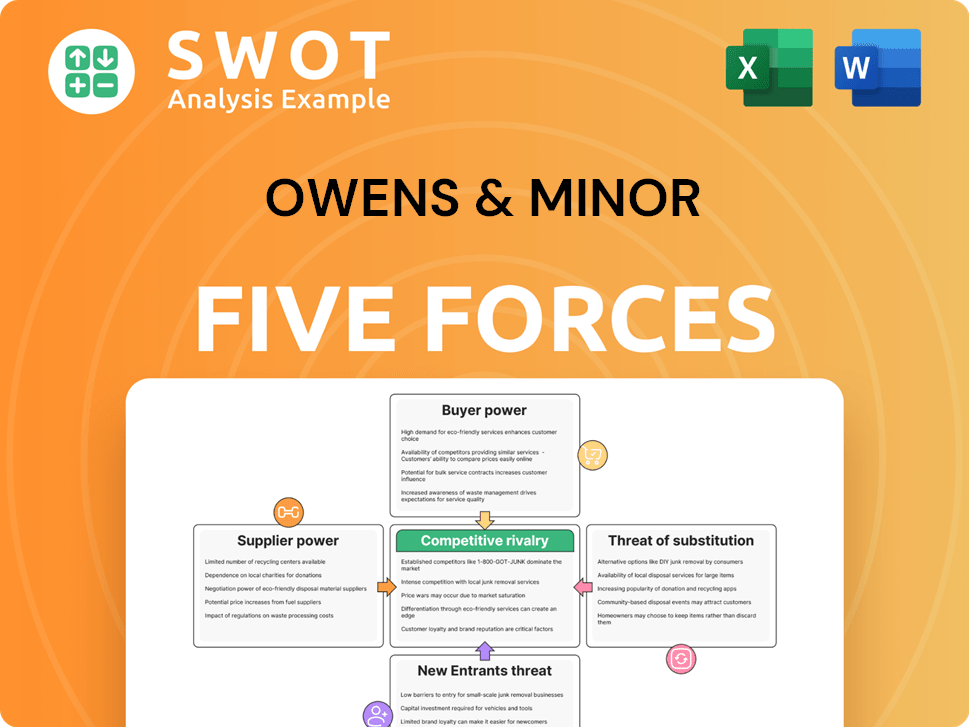
Related Blogs
- What are Mission Vision & Core Values of Owens & Minor Company?
- What is Competitive Landscape of Owens & Minor Company?
- What is Growth Strategy and Future Prospects of Owens & Minor Company?
- How Does Owens & Minor Company Work?
- What is Sales and Marketing Strategy of Owens & Minor Company?
- What is Brief History of Owens & Minor Company?
- What is Customer Demographics and Target Market of Owens & Minor Company?
Disclaimer
All information, articles, and product details provided on this website are for general informational and educational purposes only. We do not claim any ownership over, nor do we intend to infringe upon, any trademarks, copyrights, logos, brand names, or other intellectual property mentioned or depicted on this site. Such intellectual property remains the property of its respective owners, and any references here are made solely for identification or informational purposes, without implying any affiliation, endorsement, or partnership.
We make no representations or warranties, express or implied, regarding the accuracy, completeness, or suitability of any content or products presented. Nothing on this website should be construed as legal, tax, investment, financial, medical, or other professional advice. In addition, no part of this site—including articles or product references—constitutes a solicitation, recommendation, endorsement, advertisement, or offer to buy or sell any securities, franchises, or other financial instruments, particularly in jurisdictions where such activity would be unlawful.
All content is of a general nature and may not address the specific circumstances of any individual or entity. It is not a substitute for professional advice or services. Any actions you take based on the information provided here are strictly at your own risk. You accept full responsibility for any decisions or outcomes arising from your use of this website and agree to release us from any liability in connection with your use of, or reliance upon, the content or products found herein.